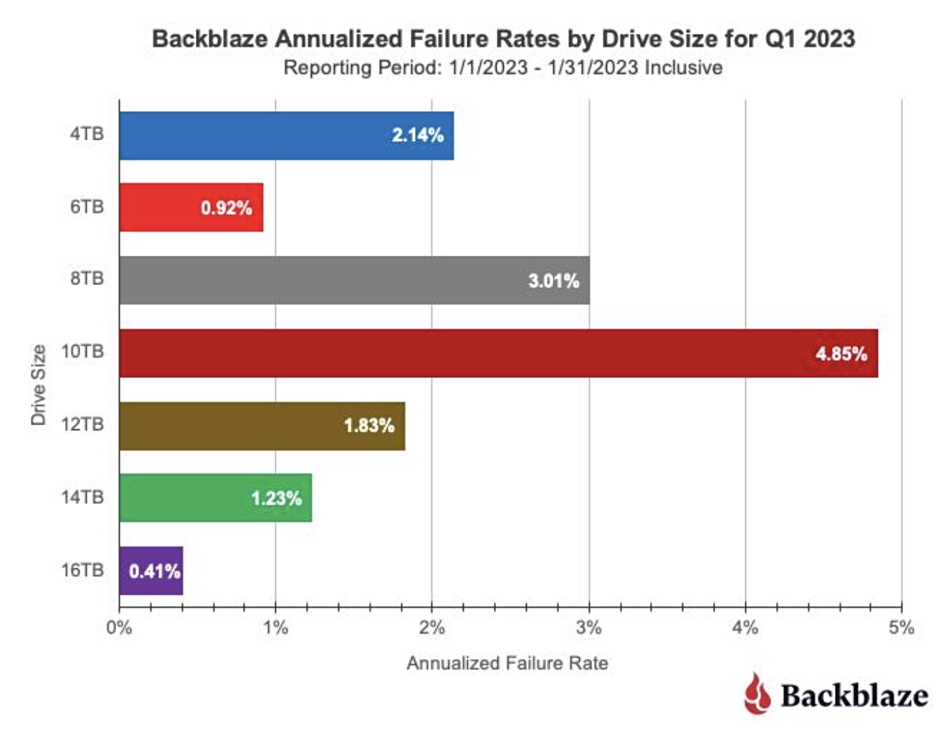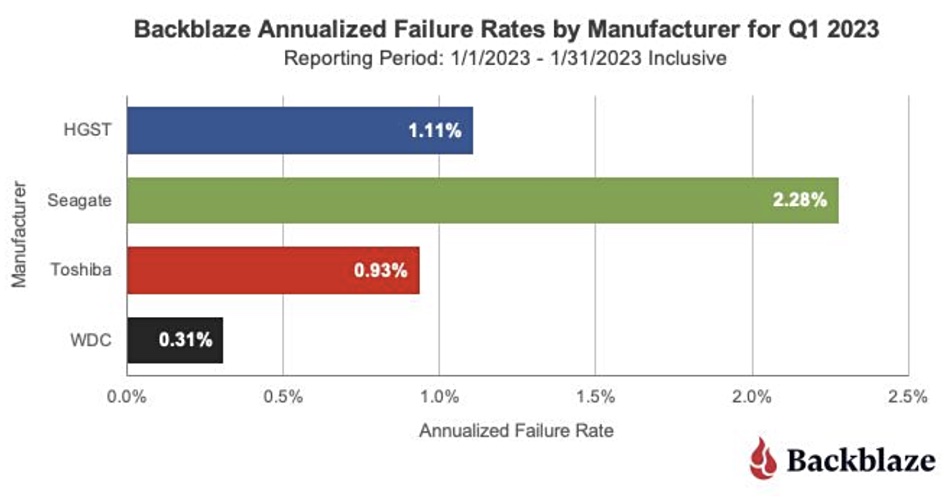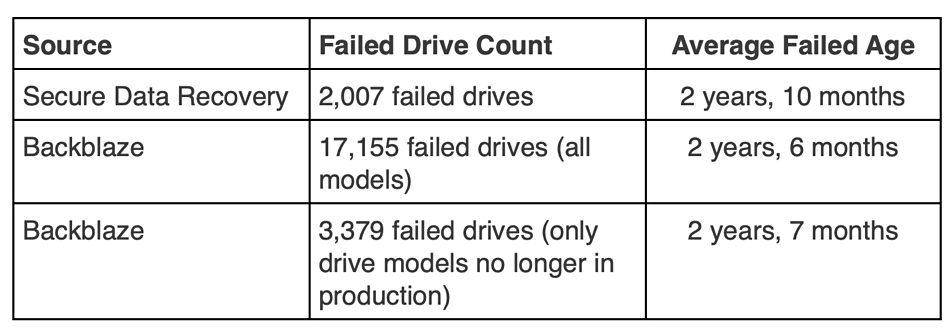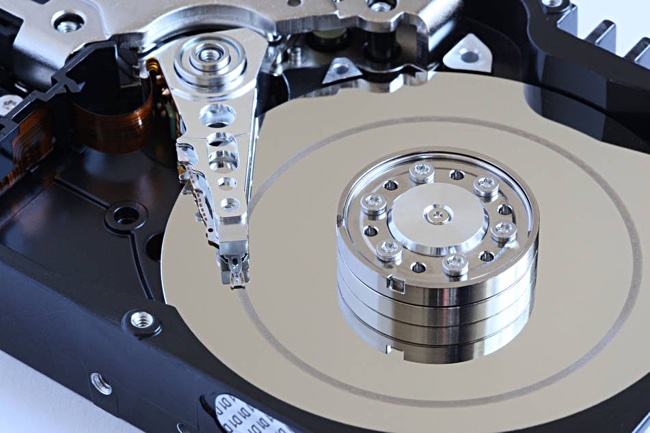Cloud and backup storage supplier Backblaze publishes quarterly hard disk drive failure rate statistics and has just started doing so for its SSD boot drives as well. Not much has changed in the annualized failure rates (AFR) with the latest HDD failure stats. As lifetime drive hours increase, the HDD population grows: there are 236,893 now, and an average AFR of 1.54 percent.
The latest Backblaze HDD AFR report has the usual table of HDD failure numbers by drive model and failure rate charts by capacity. As drives gain more capacity over time, we could say this chart shows a recovery in drive reliability after a 10TB failure rate peak. The newest 16TB drives are now the most reliable in Backblaze’s HDD buying history.

Backblaze also has a failure rate chart by manufacturer:

It’s no surprise that Seagate has the lowest reliability rating; Backblaze reported this was the case in late 2021 and, as these are annualized numbers, it will take years for the failing Seagate drives to disappear from the stats.
Average failed disk age
This time around, the Backblaze team examined the average age of failed drives, a topic which B&F reported on here. Data recovery business Secure Data Recovery found the average failed hard drive was just two years and 10 months old. Was the same true for Backblaze’s failed HDD population?
That population totalled 17,155 drives, dating from April 2013 up to the end of March this year. Their average age when they failed was two years and six months; not much different from the Secure Data Recovery number. The calculation was rerun to exclude drives which were still in operation, and therefore likely to fail at some point.

This revealed “35 drive models consisting of 3,379 drives that have a failed average age of two years and seven months.”
You can access Backblaze’s HDD test data page and run your own calculations on the data. If you use or publish the data please cite Backblaze as the source. Backblaze notes that “you are solely responsible for how you use the data” and you may not “sell this data to anyone; it is free.”








